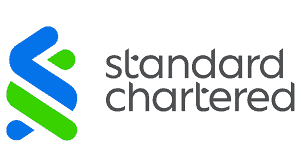The strategic role of treasury will soon require ESG goals to be embedded into all operations and processes, say David Rego and Sunny Chan at Standard Chartered.

The responsibility of treasurers to drive the ESG agenda within their organisations continues to grow.
Treasury teams have a pivotal role in supporting efforts to integrate ESG standards and implement sustainability practices with business objectives. The goal is to meet the expectations of shareholders and wider stakeholders – who are now looking beyond just P&L to a better and more sustainable future for all.
In reality, this is sharpening the focus of treasurers on how to balance liquidity needs and traditional treasury and finance tasks with a desire to make a meaningful environmental and social impact.
As a result, David Rego, Head of Global Liquidity, Deposits and Escrow Solutions at Standard Chartered, is seeing greater engagement from treasury teams in four key areas: exploring sustainable finance as an alternative funding path; looking for ESG-friendly options when investing excess cash; ensuring a positive influence as part of supply chain financing; and digitising processes and workflows.
Making sustainability mainstream
“Our sustainability proposition has been designed with our clients in mind – to provide solutions that support corporates as they shape their businesses to be more sustainable and provide viable liquidity and financing options to companies and suppliers as they improve their ESG performance,” said Rego.
For example, Standard Chartered has worked with Sustainalytics, the ESG and corporate governance data and research firm, to create a Green and Sustainable Product Framework. The bank has also launched a range of solutions to enable treasurers to leverage this framework.
Such solutions have been developed to work seamlessly with existing structures to help treasurers weave sustainability into traditional financing and risk management activities more easily.
Three core features underpin any relevant liquidity and investment solution: flexibility, to retain liquidity for operational cash needs; transparency, in line with broader sustainability standards and regulations; and simplicity, to ensure it can be maintained and is easy to understand.
The Sustainable Account brings this to life. “It offers an effortless way to contribute to sustainability while retaining access to liquidity,” said Sunny Chan, Director, Account Services at Standard Chartered.
More specifically, the cash balance in the Sustainable Account is referenced against sustainable loans and projects financed by the bank in accordance with the Green and Sustainable Product Framework. “Clients can use their cash balance in the Sustainable Account for their operating needs, similar to a conventional current or saving account, yet at the same time contribute to sustainability,” added Chan.
Standard Chartered has also created other channels for treasurers to embed sustainability into their processes and cash management operations.
For example, it is the first bank to develop and launch a sustainable trade finance proposition. “Our clients can now complement their sustainable agenda, including sustainable sourcing in their supply chains, with tailor-made financing solutions that support procurement and purchase of sustainable goods and services; sustainability in suppliers; sustainable end-uses, as well as transitioning industries,” said Chan.
In addition, an interactive sustainable supply chain performance indicator tool allows clients and prospects to compare the sustainability and resilience of their supply chains with those of their peers.
Financing a sustainable future
Based on the trajectory of incorporating sustainability within the corporate landscape, the treasury function of the future will need to balance P&L, growth and sustainability.
“With shareholders and customers expecting sustainability, treasury, as the lifeblood of an organisation, must embrace it where they can and seek financial solutions such as sustainable accounts and deposits, sustainable trade solutions and loans, longer-tenor green bonds and sustainability-linked derivatives,” explained Chan.
This means treasurers will need to be open to exploring new sustainable-linked solutions, in addition to conventional ones.
From a funding perspective, treasurers embracing sustainable finance need to factor in demands from the expanding group of investors and banks looking for better disclosure to direct their capital to opportunities aligned with their own net zero commitments.
Ultimately, a combination of these forces should lead to sustainable finance options becoming the norm. “Treasury managers will need to understand the ESG impacts of their firm’s operations as well as their financial impact to effectively secure capital,” explained Rego. “They are the ‘face’ of their organisations to the capital markets, representing the ESG data and associated corporate targets externally to all stakeholders.”
Learn more about Standard Chartered’s solutions for treasurers, such as the Sustainable Account and Sustainable Trade Financing proposition.
Sponsored by:
